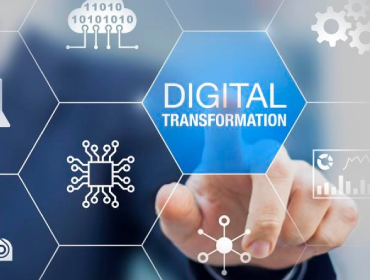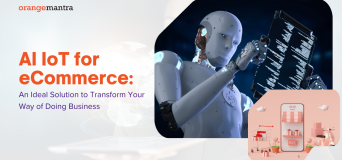HealthTech is an evolving industry, with innovative technologies making inroads into it. The competition in the domain is daunting, which is the reason why providers are ready to go the extra mile to deliver exceptional patient care and experiences. The only way to stand apart in this context is by embracing innovation in the form of consumer-centric tech solutions.
Here too, you need to think out-of-the-box to ideate and implement solutions that strengthen the core of your business and ensure the delivery of value-driven care to the consumers. While being different is the key, you also need to keep pace with the reigning technology trends to be a step ahead.
Here are the top 10 HealthTech trends that are all set to transform patient care in 2020 and beyond.
Trend #1: Artificial Intelligence And Machine Learning
With the global population growing at a rapid pace, Artificial Intelligence and Machine Learning offer new opportunities for the identification of diseases and conditions, monitoring of health epidemics, development of treatment plans, driving efficiencies in research and clinical trials, and empowering operations to handle the increased workloads on the HealthTech system.
As medical data piles up faster than ever, it will be necessary to lean in big data and AI-based tools to process it. Artificial intelligence algorithms have the potential for learning from the data and predicting the probability of a condition to enable doctors to come up with viable diagnosis and treatment plans for individuals and communities.
Trend #2: Genomics
The role of Artificial Intelligence and Machine Learning will not be confined to predictive data analytics but extend to advancing genomic medicine as well. This area of medicine leverages the genomic information of individuals to determine personalized treatment plans and the best possible clinical care for successful outcomes.
Genomic medicine is making an immense impact in pharmacology, oncology, and infectious diseases. Computers are used for analyzing genes and genetic mutations which increase the risk factors for specific medical conditions. This can help the medical community to gain a better understanding of how diseases occur and how they can be treated or eradicated.
Trend #3: Wearable Tech
It will be wrong to say that wearable fitness technology is new to the HealthTech domain as it has been around for some time. However, it is predicted to become a major trend in the new decade as wearable devices and apps will be more common than they were before. Further, they will have much more to offer considering the advancement in technology.
For instance, today’s smartwatches are not only capable of tracking the wearer’s steps but monitoring their heart rhythms as well. Amazingly, ECG monitors are also available as wearable now. They can detect atrial fibrillation and even send reports to the doctor. Another amazing wearable invention for the health tech sector is a self-adhesive biosensor patch that can track the wearer’s temperature, heart rate, and several other metrics.
Trend #4: Virtual Reality, Augmented Reality, And Mixed Reality
A mix of Virtual Reality, Augmented Reality, And Mixed Reality, the extended reality is another tech breakthrough in the HealthTech sector in 2020. AR and VR are extremely beneficial for physician training and surgery simulation, but they are going to be all the more critical for an important part in patient care and treatment.
Virtual reality will be used for aiding patients with visual impairment, depression, and autism. Similarly, AR-based applications will be a part of surgical practices, helping surgeons with delicate and precision-oriented tasks such as reconnecting blood vessels. Mixed Reality will deliver better education and training capabilities for medical professionals and help patients have a good understanding of their conditions and treatment plans.
Trend #5: Robotics
Robotics is another major healthtech trend that is expected to make a noise in 2020 and beyond. In fact, robots are already a part of the operating rooms in the form of surgical assistants. However, the potential for robotics in healthcare will extend beyond only surgical uses in the coming time.
Robots will be used for handling more varied tasks such as helping practitioners examine and treat patients in remote areas via telepresence, assisting patients with rehabilitation, physiotherapy, or prosthetics, packaging and transporting medical supplies, automating diagnostic labs, and disinfecting hospital rooms. You may even see something as innovative as a micro-bot, which is capable of delivering target therapy to a specific body part, such as clearing bacterial infections or giving radiation to a tumor.
Trend #6: Digital Twins
A digital twin refers to a lifelike replica of an entity in the physical world. When it comes to the healthcare industry, digital twins exist in the form of replicas of the life-long data records of individuals. They can play a key role in assisting clinicians to determine the likelihood of a positive outcome of a specific procedure, make effective therapeutic decisions, and manage chronic diseases for individual patients.
The reason why digital twin technology is all set to make it big in the health tech landscape is that it can facilitate the delivery of effective, patient-centric care.
Trend #7: 3D Printing
3D printing is an advanced technology that enables research, prototyping, and customization as a part of manufacturing operations. The technology is going to make inroads into the healthcare vertical this year and ahead. To start with, 3D printing will be used for manufacturing advanced medical devices and surgical tools.
Surgeons can even replicate patient-specific prosthetics and transplant organs with the technology. Dentistry and orthodontics are the fields of medicine where 3D printing can find immense usage.
Trend #8: Machine Vision
Machine vision is a technology that trains computers to understand visual input and infer useful outcomes for humans. The technology will be used widely in the healthcare segment in more than one way, from accurate diagnostics to viewing scans and medical images, recording visual information during surgeries, and more.
Machine vision is a technology that trains computers to understand visual input and infer useful outcomes for humans. The technology will be used widely in the healthcare segment in more than one way, from accurate diagnostics to viewing scans and medical images, recording visual information during surgeries, and more.
For example, machine vision can enable doctors to definitively know the optimal volume of blood that a woman loses in childbirth. The information can serve as a useful insight for designing an appropriate care algorithm to reduce the mortality rate for postpartum hemorrhaging. The best thing about using machine vision is that it replaces guesswork with accuracy.
Trend #9: Chatbots
Though chatbots have been around in the retail and e-commerce segments for quite some time, this year will see them making it big in the healthcare domain. Dealing with routine patient queries using chatbots can help organizations realize considerable cost savings. Professionals can leverage them to address easily-diagnosed problems while they focus on the ones which require more attention.
Further, bots can keep track of contacts, manage appointments and easily make changes for simplifying the practitioner’s schedule. Patients, on the other hand, can use chatbot-based apps for getting timely refills of prescriptions orders and simplifying the billing process. Additionally, lab tests can be transmitted readily and outcomes can be shared with patients sooner.
Trend #10: Blockchain
Blockchain is a futuristic technology that allows large numbers of users to have secure access to a common ledger. Though this technology sounds more like one that may be useful for banking and finance, it is all set to play a significant role in the digital transformation of healthcare organizations as well.
Blockchain is capable of empowering the with reliable information systems that can be created, modified, managed and distributed with greater integrity. For example, a specialist onboarded by a hospital for treating specific conditions can be given quick access to the patient records through a secure blockchain-based system. The information can be kept anonymous to ensure compliance with HIPAA and GDPR standards.
These healthcare tech trends definitely seem big and embracing them appears to be a major challenge. However, collaborating with an expert digital transformation partner like OrangeMantra can help you make the most of the opportunities that these trends have to offer. With decades of industry experience and an excellent track record of having served some leading healthcare brands, we come ahead as a name you can trust.






















